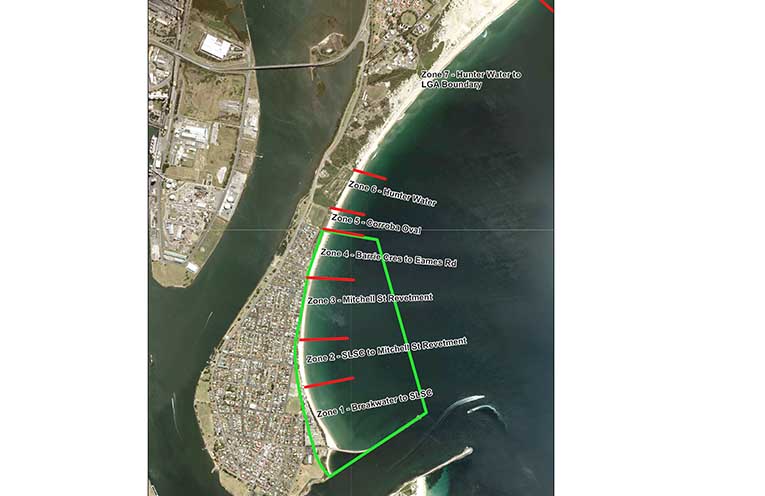
COASTAL erosion is an issue which is coming to a head particularly at Stockton Beach.
 Advertise with News of The Area today.
Advertise with News of The Area today.It’s worth it for your business.
Message us.
Phone us – (02) 4981 8882.
Email us – media@newsofthearea.com.au
A plan is being put forward by Newcastle City Council using offshore sand to save Stockton Beach, protecting homes and community land as well as protect $2.5 million in public assets.
This plan if approved addresses the coastal erosion at an estimated cost of $19 million over five years, in addition to the requirement for mass offshore sand nourishment which will take an estimated $21 million investment followed by $12 million in maintenance every decade.
The plan identifies actions to take over the next 12 months to address immediate risks, while the NSW Deputy Premier’s Stockton Erosion Taskforce determines a legal pathway to secure the required volume of sand from approximately two kilometres offshore.
Research undertaken as part of the CMP has also found that 112,000 cubic metres of sand is being lost each year, far more than previously estimated.
Immediate actions at Stockton Beach include an initial sand nourishment program of 50,000 cubic metres from land-based (or other permissible) sources, while undertaking essential protection works to the ends of existing seawalls to address the imminent risk of losing both private property and community assets.
Newcastle Lord Mayor Nuatali Nelmes said the Stockton CMP struck a balance between the needs of a sandy beach for the community to enjoy, and protecting coastal assets and properties from erosion.
“The call for mass sand nourishment for both beach amenity and asset protection has been very clear, and through cost-benefit analysis we’ve confirmed this option stacks up with a $2.5 million return on investment,” the Lord Mayor said.
“We’re thankful the NSW Government and in particular the Deputy Premier has recognised the importance of this issue and has committed to using its many agencies to deliver a mechanism to get sand onto Stockton Beach.
“We are now at a critical point in delivering an outcome for Stockton which is why it’s so important for the community to have their say on the plan before it goes to the NSW Government at the end of June.”
Barbara Whitcher, Chair, Stockton Community Liaison Group, Stockton resident said, “It’s my hope that the Stockton CMP is considered by the broader community in context, that is City of Newcastle defining its preferred long-term management option while addressing what it can do now.
“Now is our chance to present a united front between the Stockton community and City of Newcastle so we can get the outcome we need,” Ms Whitcher said.
Professor Ron Boyd, Professor Earth Sciences, Stockton resident stated “The Stockton CLG has been providing technical background for the local community and also giving plenty of feedback to City of Newcastle on issues that are important to Stockton.
It is his hope that the Stockton community can achieve some agreement through the public exhibition process so that a consensus position is provided to City of Newcastle generating a strong Coastal Management Program submitted to the State Government,” Professor Boyd said.
Member for Port Stephens Kate Washington told News Of The Area, “The Stockton erosion issue is very similar to the situation we face in various parts of Port Stephens, particularly Jimmys Beach in Hawks Nest. “In both cases we have residents whose houses are at serious risk of being washed away, and communities that are frightened for their future.
What we’ve seen over the last few years is a real reluctance by state government agencies to put in place long-term erosion management plans.
“It’s taken a lot of community advocacy to get these long-term plans in motion, and that’s come with a lot of unnecessary stress and anxiety. But, with a lot of pushing from the grass roots, we can get some certainty and, finally, some stability to reassure local communities,” she said.
By Marian SAMPSON

So STOP SAND MINING!